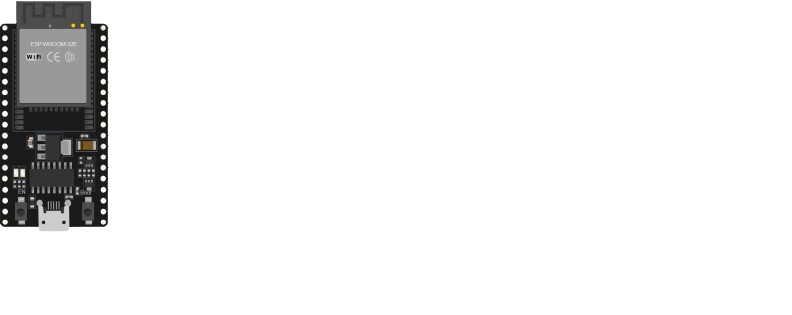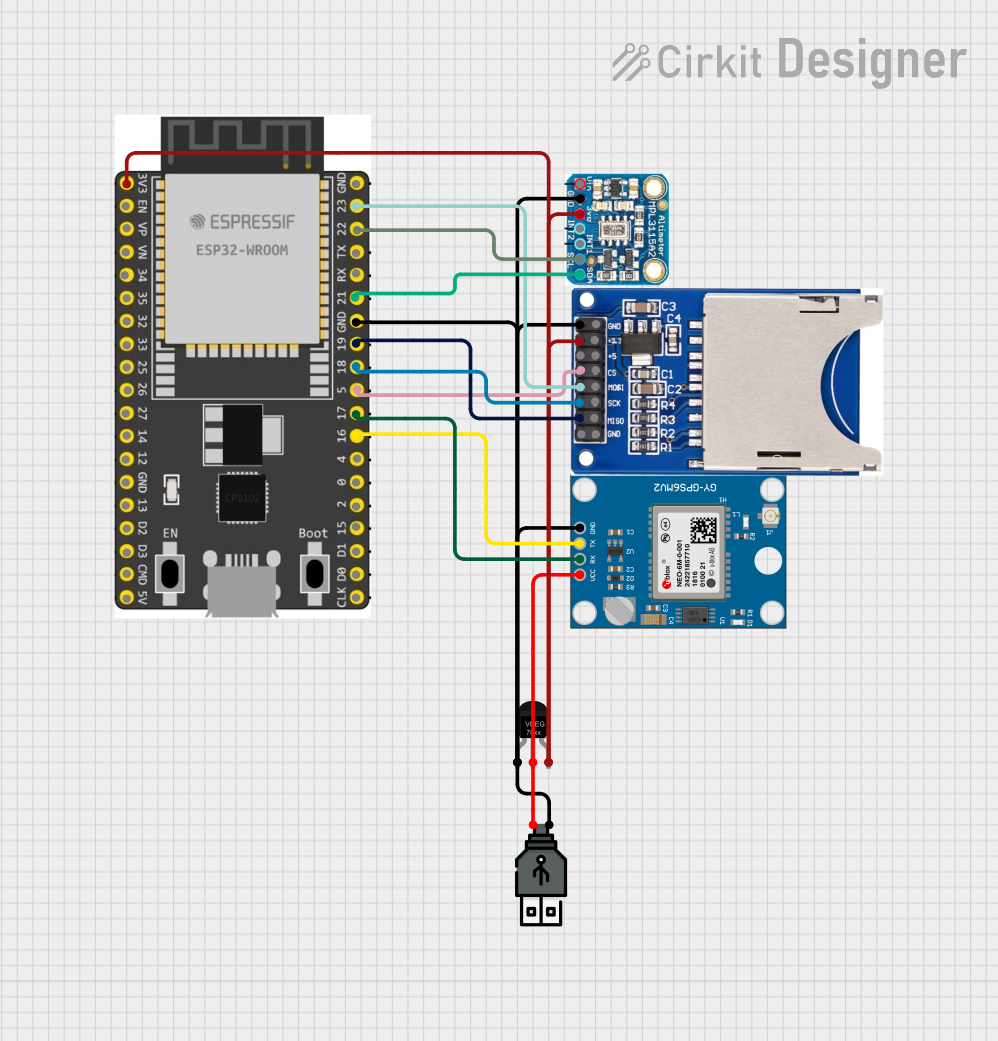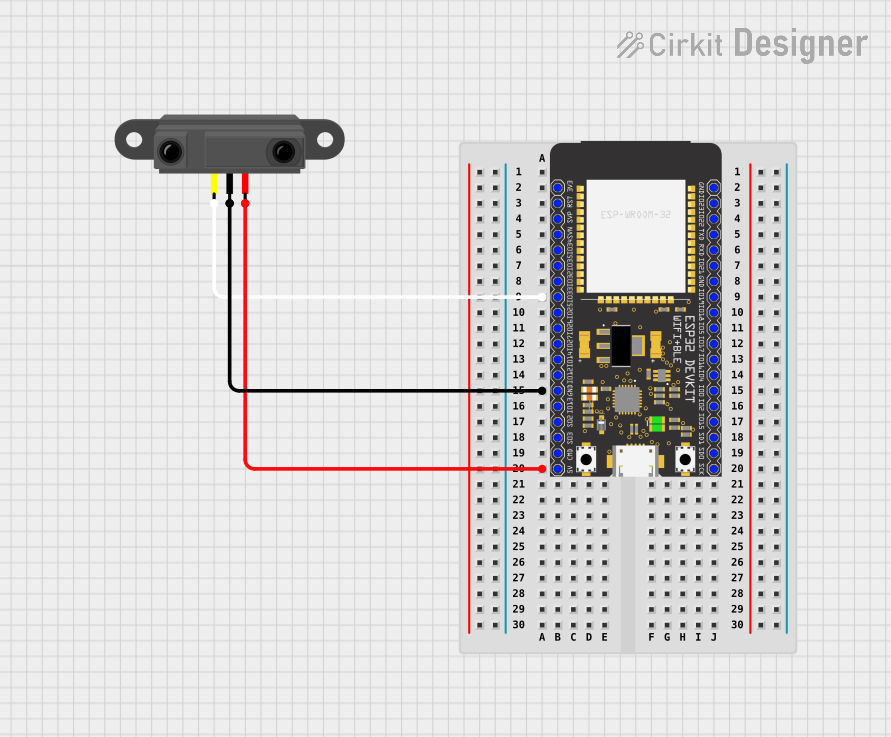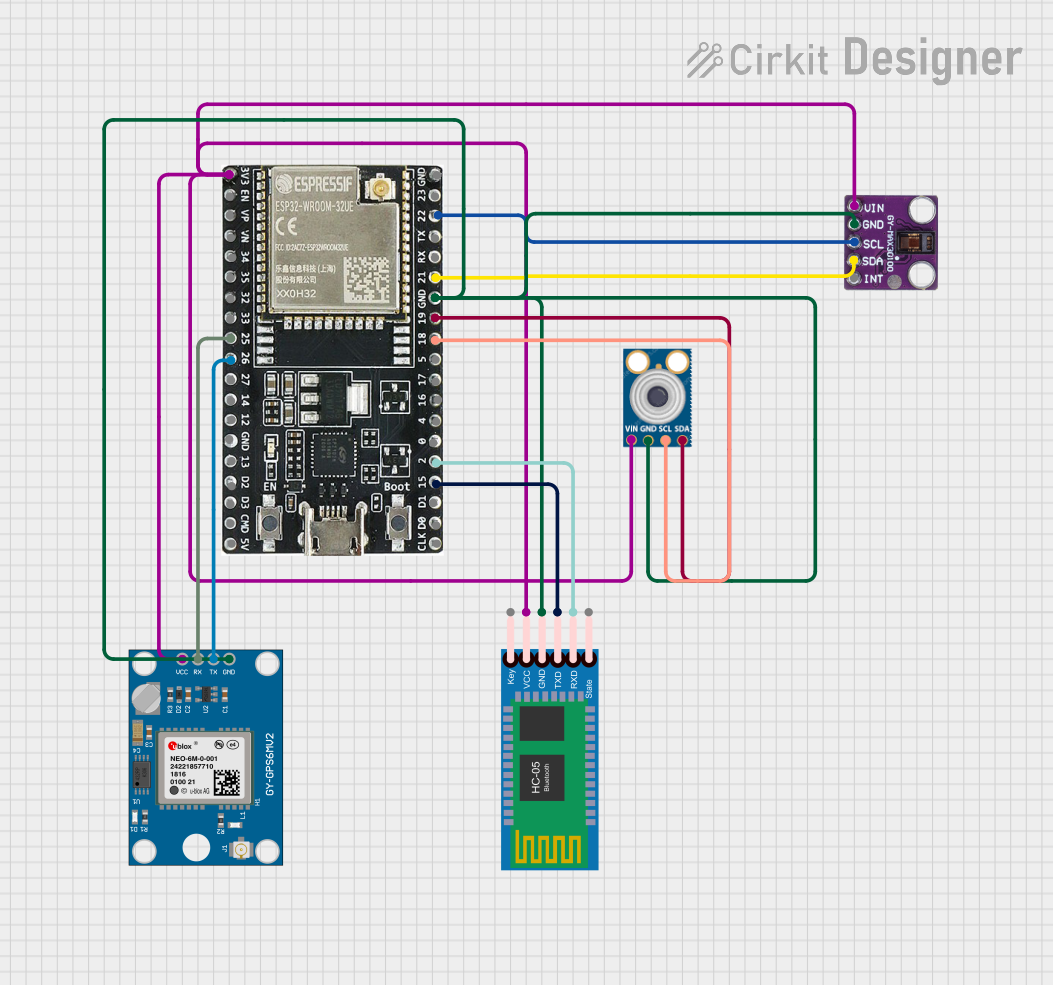
How to Use esp32 wroom 32e: Examples, Pinouts, and Specs

 Design with esp32 wroom 32e in Cirkit Designer
Design with esp32 wroom 32e in Cirkit DesignerIntroduction
The ESP32-WROOM-32E, manufactured by Espressif Systems (Part ID: DOS), is a powerful and versatile microcontroller module designed for Internet of Things (IoT) applications. It features integrated Wi-Fi and Bluetooth capabilities, dual-core processing, and a wide range of GPIO pins, making it suitable for a variety of projects, from home automation to industrial control systems.
Explore Projects Built with esp32 wroom 32e

 Open Project in Cirkit Designer
Open Project in Cirkit Designer
 Open Project in Cirkit Designer
Open Project in Cirkit Designer
 Open Project in Cirkit Designer
Open Project in Cirkit Designer
 Open Project in Cirkit Designer
Open Project in Cirkit DesignerExplore Projects Built with esp32 wroom 32e

 Open Project in Cirkit Designer
Open Project in Cirkit Designer
 Open Project in Cirkit Designer
Open Project in Cirkit Designer
 Open Project in Cirkit Designer
Open Project in Cirkit Designer
 Open Project in Cirkit Designer
Open Project in Cirkit DesignerCommon Applications and Use Cases
- IoT devices and smart home systems
- Wireless sensor networks
- Wearable electronics
- Industrial automation and control
- Robotics and drones
- Prototyping and development of connected devices
Technical Specifications
Key Technical Details
- Processor: Dual-core Xtensa® 32-bit LX6 microprocessor
- Clock Speed: Up to 240 MHz
- Flash Memory: 4 MB (external SPI flash)
- RAM: 520 KB SRAM
- Wireless Connectivity:
- Wi-Fi: 802.11 b/g/n (2.4 GHz)
- Bluetooth: v4.2 BR/EDR and BLE
- Operating Voltage: 3.0V to 3.6V
- GPIO Pins: 34 (multipurpose, including ADC, DAC, PWM, I2C, SPI, UART)
- Power Consumption:
- Active mode: ~240 mA
- Deep sleep mode: ~10 µA
- Operating Temperature: -40°C to 85°C
- Dimensions: 18 mm x 25.5 mm x 3.1 mm
Pin Configuration and Descriptions
The ESP32-WROOM-32E has 38 pins. Below is a summary of the key pins and their functions:
| Pin Number | Pin Name | Function |
|---|---|---|
| 1 | EN | Enable pin. Pull high to enable the module, low to disable. |
| 2 | IO0 | GPIO0. Can be used for general I/O or boot mode selection. |
| 3 | IO2 | GPIO2. General-purpose I/O. |
| 4 | IO4 | GPIO4. General-purpose I/O. |
| 5 | IO5 | GPIO5. General-purpose I/O. |
| 6 | IO12 | GPIO12. Can be used as ADC, touch input, or general-purpose I/O. |
| 7 | IO13 | GPIO13. Can be used as ADC, touch input, or general-purpose I/O. |
| 8 | IO14 | GPIO14. Can be used as ADC, touch input, or general-purpose I/O. |
| 9 | IO15 | GPIO15. Can be used as ADC, touch input, or general-purpose I/O. |
| 10 | IO16 | GPIO16. General-purpose I/O. |
| 11 | IO17 | GPIO17. General-purpose I/O. |
| 12 | IO18 | GPIO18. SPI clock or general-purpose I/O. |
| 13 | IO19 | GPIO19. SPI data or general-purpose I/O. |
| 14 | IO21 | GPIO21. I2C SDA or general-purpose I/O. |
| 15 | IO22 | GPIO22. I2C SCL or general-purpose I/O. |
| 16 | IO23 | GPIO23. SPI data or general-purpose I/O. |
| 17 | GND | Ground. Connect to the ground of the power supply. |
| 18 | 3V3 | 3.3V power input. |
For a complete pinout, refer to the official datasheet provided by Espressif Systems.
Usage Instructions
How to Use the ESP32-WROOM-32E in a Circuit
- Power Supply: Provide a stable 3.3V power supply to the 3V3 pin. Ensure the ground (GND) is connected to the circuit's ground.
- Boot Mode: To upload code, connect GPIO0 to GND and reset the module. After uploading, disconnect GPIO0 from GND.
- Programming: Use a USB-to-serial adapter to connect the module to your computer. Commonly used software includes the Arduino IDE or Espressif's ESP-IDF.
- GPIO Usage: Configure GPIO pins as input or output in your code. Be mindful of the maximum current ratings to avoid damage.
Important Considerations and Best Practices
- Voltage Levels: The ESP32 operates at 3.3V logic levels. Avoid connecting 5V signals directly to its pins.
- Power Supply: Use a low-noise, stable power supply to ensure reliable operation.
- Antenna Placement: Ensure the onboard antenna has sufficient clearance from metal objects to avoid signal interference.
- Deep Sleep Mode: Use deep sleep mode to conserve power in battery-operated applications.
Example Code for Arduino UNO
Below is an example of how to blink an LED connected to GPIO2 using the Arduino IDE:
// Example: Blink an LED connected to GPIO2 on the ESP32-WROOM-32E
// Define the GPIO pin for the LED
#define LED_PIN 2
void setup() {
// Set the LED pin as an output
pinMode(LED_PIN, OUTPUT);
}
void loop() {
// Turn the LED on
digitalWrite(LED_PIN, HIGH);
delay(1000); // Wait for 1 second
// Turn the LED off
digitalWrite(LED_PIN, LOW);
delay(1000); // Wait for 1 second
}
Troubleshooting and FAQs
Common Issues and Solutions
Module Not Responding:
- Ensure the EN pin is pulled high.
- Verify the power supply voltage is within the 3.0V to 3.6V range.
- Check the connections to the USB-to-serial adapter.
Code Upload Fails:
- Ensure GPIO0 is connected to GND during the upload process.
- Verify the correct COM port is selected in the Arduino IDE or ESP-IDF.
- Check the baud rate (default is 115200).
Wi-Fi Connection Issues:
- Ensure the SSID and password are correct in your code.
- Check for interference from other devices on the 2.4 GHz band.
Overheating:
- Verify the power supply is not exceeding 3.6V.
- Avoid short circuits on the GPIO pins.
FAQs
Q: Can the ESP32-WROOM-32E operate on 5V?
A: No, the module operates at 3.3V. Use a voltage regulator or level shifter for 5V systems.Q: How do I reset the module?
A: Pull the EN pin low momentarily or press the reset button (if available).Q: Can I use the ESP32-WROOM-32E with a battery?
A: Yes, ensure the battery provides a stable 3.3V output or use a regulator.Q: What is the maximum current draw of the module?
A: The module can draw up to 240 mA during active operation. Ensure your power supply can handle this.
For additional support, refer to the official documentation and community forums provided by Espressif Systems.